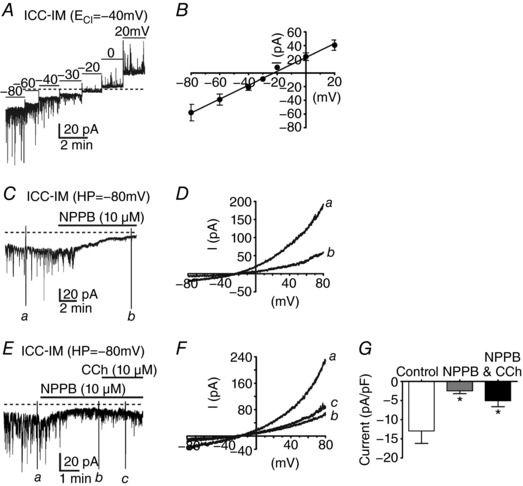Figure 4. The CaCC blocker NPPB inhibited CCh activation of inward currents in ICC‐IM.

A, spontaneous transient inward currents (STICs) in ICC‐IM at voltage steps from –80 to +20 mV. Large STICs were observed in ICC‐IM held at potentials between –80 mV and –40 mV. B, STICs reversed at potentials between –30 and –20 mV (before correction of junction potential; calculated junction potential = 14.6 mV) using a Cs+‐rich pipette solution with = –40 mV. C and D, CaCC channel blocker NPPB (10 μm) blocked the sustained inward current and STICs, suggesting that these events were a result of CaCC. NPPB decreased holding currents from −13.9 ± 2.8 pA pF–1 to −2.5 ± 0.7 pA pF–1 (P < 0.05; n = 5). D, currents recorded in response to voltage ramps under control conditions (a) were reduced significantly by NPPB (b). Voltage ramps were applied at the time points indicated in (C). E–G, NPPB and CCh‐induced inward currents in ICC‐IM. E, NPPB (10 μm) reduced STICs and holding currents in ICC‐IM. CCh, in the presence of NPPB, added 5 min before CCh application, failed to activate inward current in ICC‐IM. F, voltage ramp protocols performed before (a) and after addition of NPPB (b) and after addition of CCh (c) (10 μm), at the time points indicated in (E). Control voltage ramps were reduced by NPPB and CCh failed to activate inward current in response to voltage ramps in the presence of NPPB. G, summary of currents activated in response to voltage ramps under control conditions (white bar) and reduction in currents after addition of NPPB (10 μm; grey bar) and CCh (10 μm) in the continued presence of NPPB (black bar; n = 5; * P < 0.05, one‐way ANOVA).
